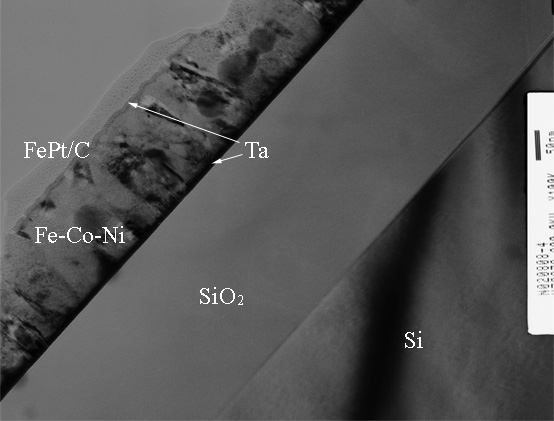Helpful Links
Current work and research interests
- TEM study on magnetic thin films and nanoparticles.
- Computer programs for electron diffraction analysis and crystallography.
- HREM and electron diffraction study of crystal structures.
Honors
- Best poster prize for physics/material sciences(1998), Scandem98 conference, Espoo/Helsinki, Finland.
- Research fellowship (1994-1995), Alexander von Humboldt (AvH) Foundation.
- Youth scientist award (1993), Chinese Academy of Sciences.
Selected Publications
- 5. PCED2.0: A computer program for the simulation of polycrystalline electron diffraction pattern, X.Z. LI, Ultramicroscopy, 110, 297-304(2010).
- 4. HREM Study and structure modeling of the eta-prim phase, the hardening precipitates in commercial Al-Zn-Mg alloys, X.Z. Li, V. Hansen, J. Gjonnes and L.R. Wallenberg, Acta Mater., 47, 2651-2659(1999).
- 3. Structure of Al-Rh-Cu Decagonal Quasicrystal: I. A unit-cell approach, X. Z. Li, K. Hiraga and K. Yubuta, Physica. B, 240, 330-337(1997).
- 2. Two-colour Penrose Tiling, X. Z. Li, J. M. Dubois and K. H. Kuo, Phil. Mag. Lett., 69, 93-98 (1994).
- 1. Structure of Al3Mn, an Orthorhombic Approximant of the Decagonal Quasicrystal, X. Z. Li, D. Shi and K. H. Kuo, Phil. Mag., B66, 331-340 (1992).
Advanced PolyCrystalline Electron Diffraction Simulation
For polycrystalline or powder TEM specimens, electron diffraction ring patterns are extensively used for phase identification, in which the diffraction pattern of a known phase acts as a fingerprint.
One approach is to use computer programs that implement the formula for electron diffraction intensity to analyze raw or processed polycrystalline electron diffraction patterns. A specially designed computer program is needed to provide a fast and accurate method for accomplishing this task. This is the motivation to develop the first version of PolyCrystalline Electron Diffraction (JECP/PCED, Li 2004).
PCED2.0 is an upgraded version of previous JECP/PCED. New features include (i) Blackman's theory, an integral two-beam dynamical theory, for intensity calculation, (ii) Match model for out-of-plane and in-plane texture, (iii) pseudo-Voigt function for peak profile of diffraction ring and (iv) improvement on diffraction pattern indexing and matching to experimental pattern.
HREM Study of Intermetallic Structure
High-resolution electron microscopic (HREM) study on the structure of the epsilon-Al3Co phase is briefly shown here. The epsilon-Al3Co phase (or Tao2 Al13Co4 in early reports) is a monoclinic phase with lattice parameters, a = 3.9863 nm, b = 0.8139 nm, c = 3.2208 nm, ß=107.96. The crystalline phase is structurally related to the Al-Co decagonal quasicrystal. A structural model of the crystalline phase has been successfully worked out, the calculated images based on the model agree with quite well the observed ones
(X.Z.Li and K. Hiraga, J. Alloys and Compounds, 269(1998) L13-L16).
The [010] HREM images of the epsilon-Al3Co phase (click to enlarge)
Cross sectional TEM images of FePt magnetic thin film
Cross-sectional TEM study of the FePt/C thin film is briefly shown here. L10 nanocomposite FePt-based thin films attract attention for extremely high-density perpendicular recording media due to their high magnetic anisotropy. A L10nanocomposite FePt:C perpendicular thin film with a soft underlayer (SUL) was designed and prepared using a non-epitaxial growth method. The cross-sectional TEM image verifies that this medium consists of a nanocomposite FePt:C layer with FePt nanoparticles embedded in a C matrix and 150 nm soft FeCoNi underlayer.
(M.L. Yan, X.Z.Li, L. Gao, S.H. Liou, and D.J. Sellmyer, Applied Physics Letters, 83(2003) 3332-3334).

Links
Works now at:
- Nebraska Center for Materials and Nanoscience, University of Nebraska
Studied and worked before at:
- Department of Materials Science and Engineering, Northwestern University
- Center for Materials Science, University of Oslo, Norway
- Institute for Materials Research, Tohoku University, Japan
- (former) Institute of Crystallography, University of Munich, Germany
- Laboratory of Science and Genie Metallic Materials, Nancy School of Mines, France
- Beijing Laboratory of Electron Microscopy (BLEM), CAS, P.R. China
- Beijing University of Iron and Steel Technology (BUIST), P.R. China
(renamed as) University of Science and Technology Beijing (USTB), P.R. China
![[alcobs48.gif]](http://www.unl.edu/ncmn-cfem/xzli/images/alcobs48.gif)
![[alcobs20.gif]](http://www.unl.edu/ncmn-cfem/xzli/images/alcobs20.gif)
![[alcocal4.gif]](http://www.unl.edu/ncmn-cfem/xzli/images/alcocal4.gif)
![[alcocal2.gif]](http://www.unl.edu/ncmn-cfem/xzli/images/alcocal2.gif)